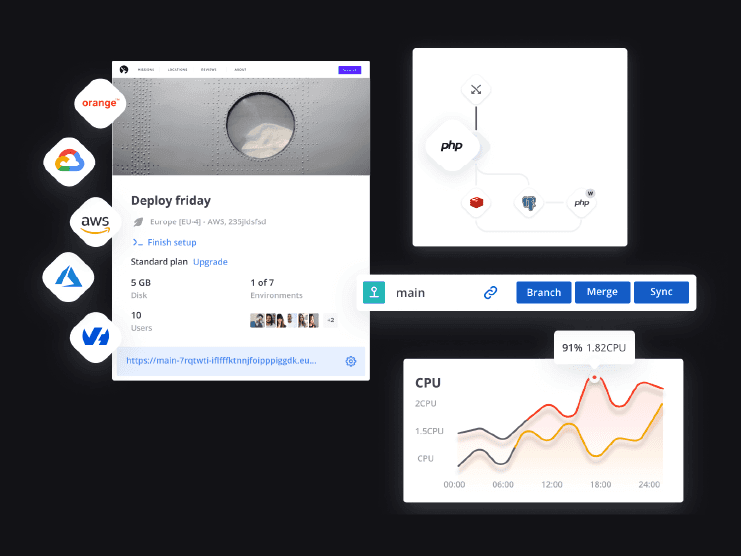Keeping your website or app up-to-date with the latest tools, frameworks, and security compliance is important for maintaining a successful online presence. That’s why when it comes to web infrastructure, you need to follow today’s absolute best practices, so you can deliver the best possible digital experiences to your audiences.
Here are five major ways you can ensure you’re running a state-of-the-art PaaS.
1. Use an all-in-one platform
You can’t solve the complexities of web infrastructure by throwing more tools at it. Simply put, an all-in-one toolbox provides everything you need to support your most critical websites. An automated platform that includes hosting, cloning, auto-scaling, CI/CD pipelines, databases, observability, security, and reliability guarantees would allow your teams to focus on improving code instead of worrying about the underlying infrastructure. Finally, having proper Git workflow best practices in place would help with faster developer onboarding.
Without that kind of stress, WebOps teams are a lot more efficient, and they can focus on more pressing priorities—like building great customer experiences.
2. Cover all possible technologies
It’s been a long time since the debut of Java, JavaScript, C++, and many of the top software languages in use today. Since then, multiple setups, frameworks, and new languages have proliferated (such as Python and Node.js), making it difficult for developers to adapt to new projects. But with a framework-agnostic approach teams can use any language, stack, or framework they want. Using a service that can drastically streamline and simplify processes will greatly reduce workload stress and help greatly in onboarding new developers.
3. Choose your favorite cloud
Cloud networking has been an option for modern companies to host their modern apps and sites for decades. And still, some organizations rely upon on-premises servers—or they use a hybrid approach. Regardless of the configuration, it’s become increasingly important to select the right app hosting partner.
Having the choice between multiple cloud options and data centers based on region is important, too. Depending on your business needs, and where your traffic comes from, you can select the most optimal solution, scale your resources up or down, and clearly monitor your costs, with the ultimate goal of providing your customers the best experience possible. Selecting a partner with a cloud-agnostic approach gives you that peace of mind.
4. Stay secure
With data breaches on the rise, both in terms of frequency and high impact costs, it’s important to choose cloud solutions that have the highest security protocols and are continually providing up-to-date improvements and patches to keep potential threats at bay. Besides following best-in-class security practices, including end-to-end encryption, you need to ensure that your selected provider has all the latest compliance standards that are in use around the world, such as SOC-2, PCI, GDPR, PIPEDA, HIPAA, and more...
5. You don’t need another server
That stat over there? That’s equivalent to all air traffic in the world. Simply browsing and clicking on a website or maintaining a mobile application should not result in that much carbon spewing into the atmosphere. It’s just not sustainable in the long run.
Hosting on greener data centers helps facilitate sustainability thanks to a greater understanding of what systems are doing and how much energy they’re consuming. With that kind of oversight, WebOps teams can optimize their systems better, instead of simply adding more hardware and increasing emissions. A more responsible development approach that helps conserve energy and reduce carbon is an easy choice for businesses to make in doing their part to help the planet.
 Switching to Platform.sh can help IT/DevOps organizations drive 219% ROI
Switching to Platform.sh can help IT/DevOps organizations drive 219% ROI Organizations, the ultimate way to manage your users and projects
Organizations, the ultimate way to manage your users and projects





